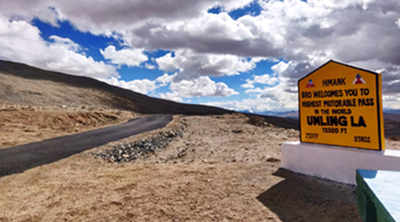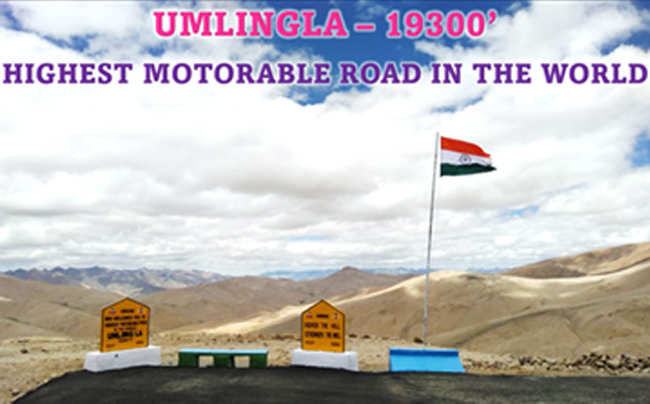Jarita wrote:
Thanks Sudarshanji. Be careful else these binary folk will dismiss you as breathless and hyperventilating as well. Anyone who speaks for a certain standard of live ability is dismissed as a card carrying activist.
Ji, not to speak for others, but I don't think anybody is disagreeing with you on the need to have respect for the environment. But please do think of the implications of what you're saying.
The average trees per capita is also a very valid number for us. We are one of the lowest in the world and that directly relates to health, bio diversity and live ability issues.
Until the population falls, there's not much we can do here. For example - the US has about 36% forest cover. India has 4 times the population of the US. So matching the US number on per capita trees, would mean that India should have four times the number of trees as the US. A tree takes about the same area, India or the US, so four times the raw forest area. On 1/3rd the land area. Which means - 36% times 12 = Impossible. For a more extreme example, try matching Russia or Canada on that one! Countries like Suriname are also pretty extreme. No amount of tree planting is going to help here, even to get close to the world average.
India can try to match the world average on % forest cover, that's doable. But per capita - forget about it.
Our road density is higher because our land per capita is one of the lowest in the world.
That is true. I believe however, that a bigger reason, is that the metric is false to begin with. For example - the minimum lane width in India is supposed to be 2.5 m, or about 8 feet. In Indian cities, the entire street road, both lanes, would be that width. In the US, the minimum lane width is 3.7 m, or 12 feet. So a four-lane road would be easily 50 feet in width, more like 60 or even a 100, with medians and shoulders. Europe would be similar. That counts the same as an 8 foot wide two-way road in India?
I think a better standard would be to calculate road area per land area, something like km-foot per km^2. India would fare much more poorly then. So when you say "widen existing roads," that is going to have almost as big an environmental impact, as building a new one. Because the road area per land area is going to jump two to five fold for the widened section.
Our logistics and transportation strategy has to reflect that density of population and the requirements for greening and preservation of bio diversity. We have to become a nation of car free zones (so that more people can live and function in those areas) and significant public transportation.
I'm conflicted on this. I do believe public transportation would have a smaller impact, but last-mile connectivity can't happen with public transport, unless you're talking of a significant number of street cars and trams in every single Indian city. There's only so much that people can walk or bike. Street cars and trams would require much wider roads.
We must also treat our last few virgin forests (10 -15 percent / don’t include the new green cover and plantations for now) as sacrosanct and not to be compartmentalized. That requires a commitment that nothing will be built through this area of 10-15 land. That is surely something we can do.
Again, what are the implications? Do we want people to interact with those forests or not? If the general public doesn't get to interact with forests, they lose respect for them, start fearing them. A few generations down the road, when we are all dead and gone, a govt. can easily make a case to our descendants, now terrified of forests, that we don't need them at all!
Should the public only interact with the new forest areas, not the virgin ones? That principle has its own problems.
General public or not, we still need rangers and workers, scientists and other professionals, interacting with those forests. Virgin forests would be of greatest interest to those professionals. Those folks are going to need connectivity, at least till the forest edge, even trekking requires some decent trails. Within the forest, there is again a need for trails, if not, people are going to be dying in there, with their gadgets and gizmos rotting away and polluting the place. If they are not allowed to carry gadgets in there, they have that much higher chance of dying. And they need some form of accommodation within the forests, however primitive, because they can't be expected to cross them in one go. Are they expected to source their water from within the forests? Or will they have piped water? Should they survive on whatever they gather from within the forest? Which presumably means hunting is allowed? With primitive weapons, or with guns? Or should they have supplies? Medicines? Television? And so on.
If everybody decides to avoid the forests (or just the virgin forests) altogether, that's even worse. Perfect for naxalites, poachers, and smugglers. And the environmental impacts of that, are going to be altogether uncontrollable. It's not like those folks are going to respect the forest and leave it alone. How is the govt. supposed to police those forests, if nobody is allowed in? Or even if they are allowed in, if they're going to be hamstrung by rules about transportation and gadgets and provisions, while the naxals have a free hand to do whatever they want?
Ji, not disagreeing with you, but the extreme of any principle, is madness.

